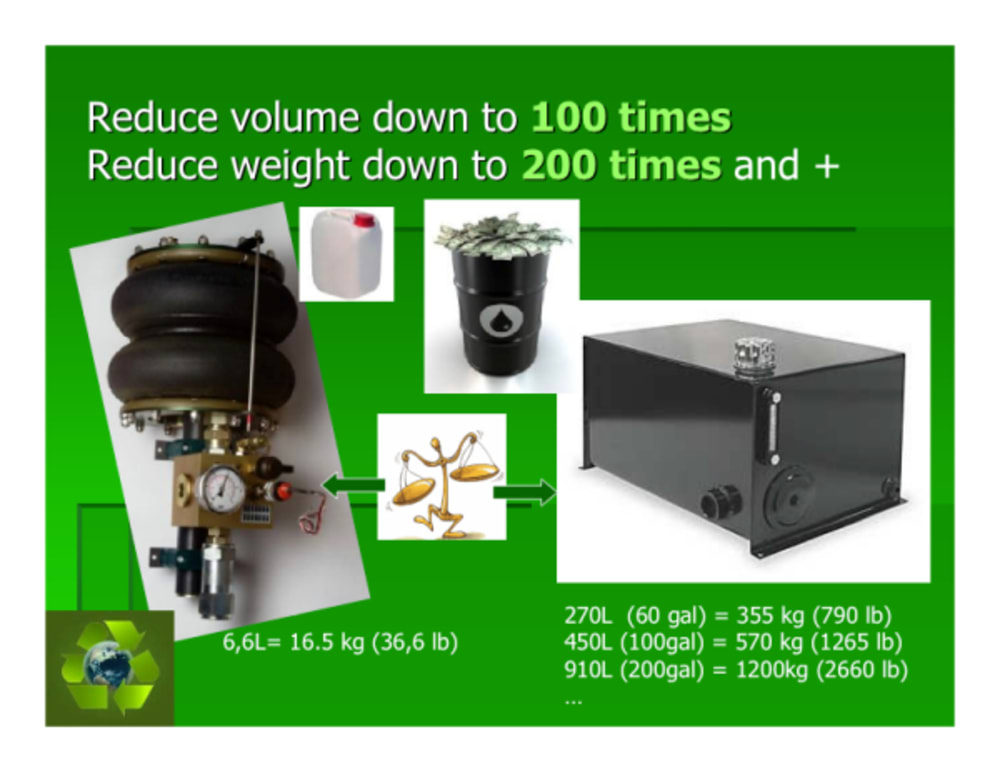The Variable Volume Reservoir (VVR) was designed around the common aerospace Bootstrap reservoir used on aircraft. The VVR design is much simpler in design and cost effective. It was designed to target the industrial hydraulic machinery sector (mobile and stationary). The main purpose is to replace the common hydraulic reservoirs where most of the time is sized too large for the application. The common rule of thumb in the industrial market for reservoir size is 2-3 times the pump flow where the VVR volume is ONLY based on thermal fluid expansion and cylinder rod volume (if applicable). In some applications the 6,6litres (400 cu.in.) VVR could replace a 400-900+ litres reservoir. This represents significative fluid volume reduction, less fluid to recycle, less space and a weight reduction of 550-1800+ Kg. The significative weight reduction could represent fuel economy for 'on the road' vehicles. In general the VVR will reduce the fluid volume by a factor of 100 and weight by 200. If required, two VVR's could be installed in series or parallel to increase volume or to isolate pumps circuit network. To state an example the large hydraulic motor shown on the lower picture (18L/rev) would normally require a 300 to 800 liters standard reservoir depending on the pump flow, where has the 6,6 L VVR will assure the same performance (and better) regardless of pump flow. The field of applications are many ...
Like this entry?
-
About the Entrant
- Name:Carl Seguin
- Type of entry:teamTeam members:Carl Seguin
René Gauthier
Claudio Bazzarelli - Software used for this entry:MasterCam, AutoCad, Catia
- Patent status:patented








